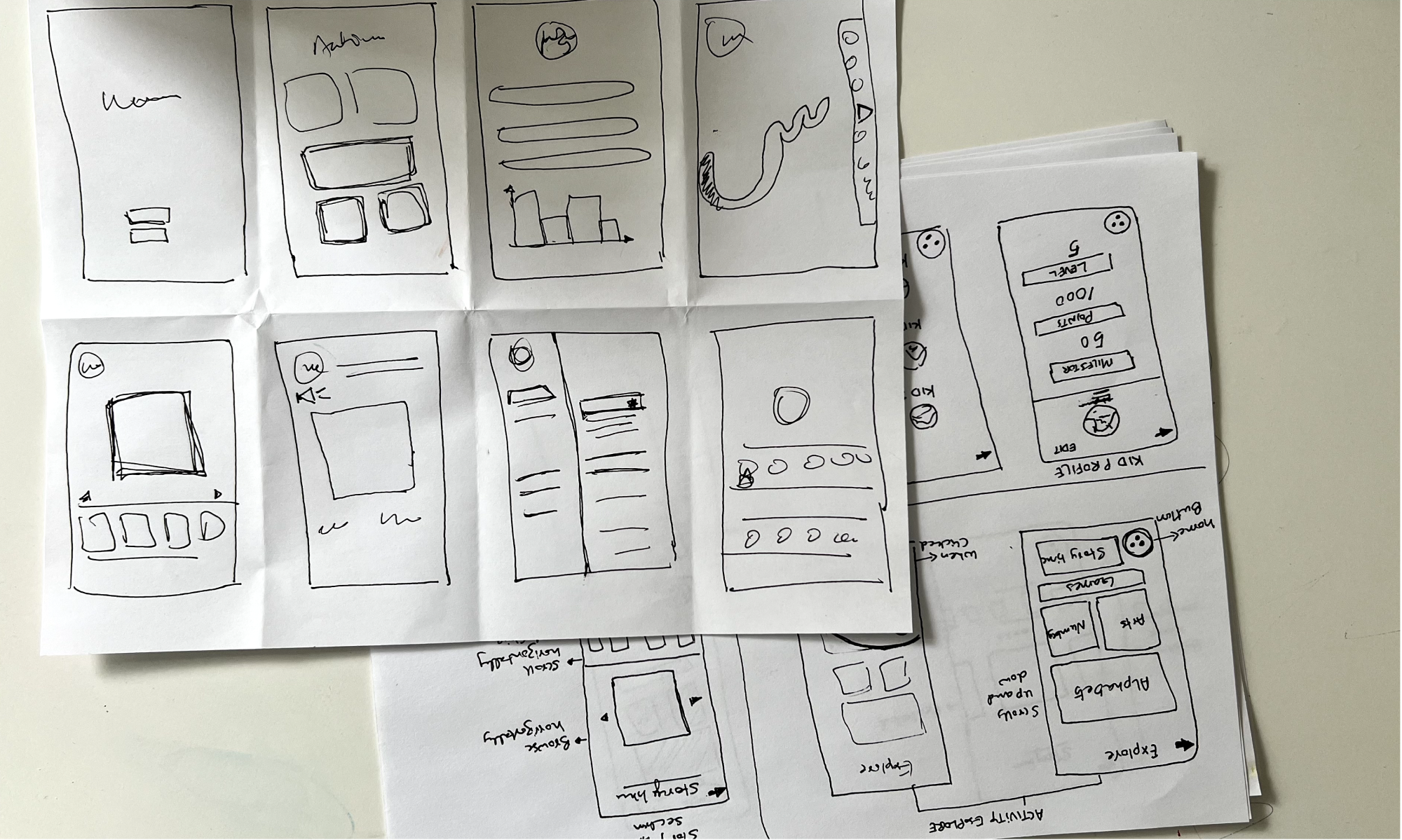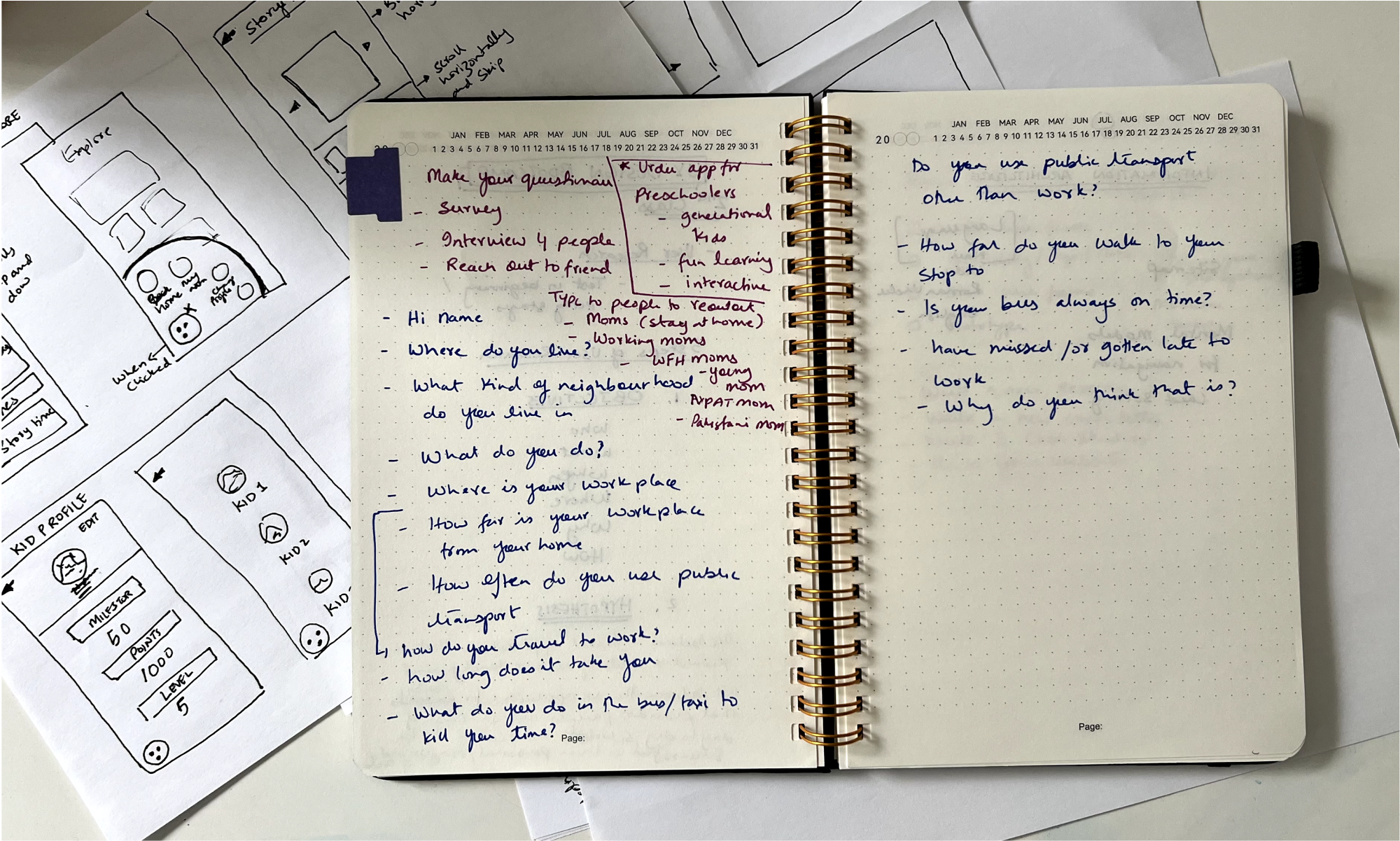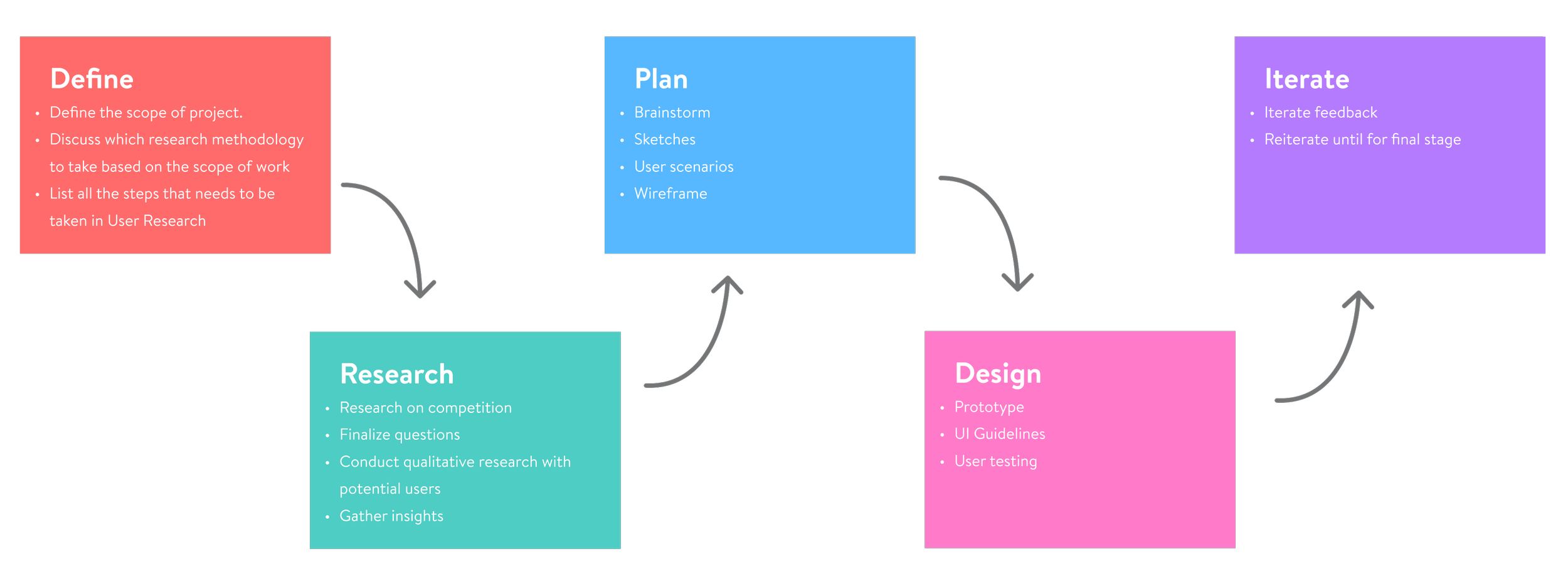
Little Urdu Reader
Building Blocks of Urdu:
A Preschooler's Journey
What I did:
Research
User Interviews
UX Design
UI Design
Prototype
Branding
UX Design Course - Final Project
Parents worldwide face challenges teaching their children to read Urdu, their native language. As a fellow parent, I personally experienced this struggle and noticed a lack of engaging resources for preschoolers learning Urdu. Existing interactive Urdu learning apps for children are scarce compared to English language apps. To address this gap, I propose an educational app targeting preschoolers, facilitating Urdu reading skills and fostering overall development. This app aims to meet the demand of parents, especially those outside Pakistan, who seek to impart cultural heritage and language. We aim to bridge this gap by offering an engaging and reliable solution, empowering parents in their efforts to teach Urdu effectively.
Idea
The proposed educational app will have interactive and engaging features, it will provide a valuable resource for parents to teach Urdu to their children in a fun and effective manner, while also promoting their overall language development. With its focus on making learning enjoyable, the app will help create a positive and motivating learning environment for kids, empowering them to learn and appreciate their mother tongue, Urdu.
One of the main goals of the app will be to make learning Urdu enjoyable for kids. It will include games, rewards, achievements, and progress tracking, to encourage kids to complete different levels and challenges. The app will also incorporate multimedia elements, such as interactive stories, rhymes, and songs in Urdu, to make the learning experience more immersive and engaging.
Additionally, the app will be designed to be user-friendly for both kids and parents, with simple navigation, clear instructions, and interactive tutorials to ensure ease of use.
Process

Research
I conducted overall 3 interviews with mothers from Pakistan and living abroad who struggle to teach Urdu to their children due to the environment's busy schedules.
Below are some quotes I pulled from the interviews that gave me an insight to the problem.

-
“I make worksheets on the go depending on the latest interest and practice simple ways of drawing using some youtube tutorials”
-
“Yes I can speak it, read it as well but probably not very fluent. Not great vocabulary as well as its a mix of english, gujrati and urdu when I speak”
-
“My son knew urdu well when we were in Pakistan but now he hardly speaks. We only speak in Gujarati at home and at school it is English so he is completely out of practice. He does understand as he loves indian movies so hindi and urdu are similar”
-
“He enjoys it. We bring urdu story books from pakistan and alphabet/number books. He understand it fully but does not respond in urdu unless prompted and cannot speak in the correct tense.”
-
“We encourage it by speaking it at home and prompting him to reply in urdu . He also video chats with his grandparents who encourage urdu”
-
“We haven’t taught it to them separately but we do communicate with each other at home in Urdu”
-
“Would love to give it a try as I would always want my kids to be bilingual and esp because urdu has been my country language and I want them to absorb my roots too”
-
“If it helps language speaking and building that will help me save time on teaching my son”
-
“Would love it and utilize it on my child's ipad”
Empathy Map
Insights
User Persona
Information Architecture
User Flows






Wireframes

-

Options of your language preference that you are most comfortable
-

Having a personal character
-

Different kinds and themes of activities make learnings more fun and easy
-

More options to personalize your experience Also a Join Our Community (a Facebook Group) where you interact with other parents using this app—also, a great way to see discussions and maybe improve their experience.




Learnings and Outcomes
During the process, I dedicated myself to delving deep into the problem and conducting extensive research. Not only did I look into the perspectives of parents and their goals and motivations, but I also analyzed various articles and publications on the issue and its root causes. These sources also suggested improving learning methodologies to meet the needs of the current generation.
The most difficult part was creating themes and user personas based on the interviews I conducted. However, with more practice, I believe I can improve. As a designer, it was particularly challenging to create lo-fi wireframes without considering the visual aspects.
Interestingly enough, the topic of my dissertation in university was quite similar. If given the proper resources and guidance, I would love to take this project even further. I have only scratched the surface, as it would require professionals such as educationists, content writers, and extensive testing with both parents and children to create an app that truly meets their needs.



















